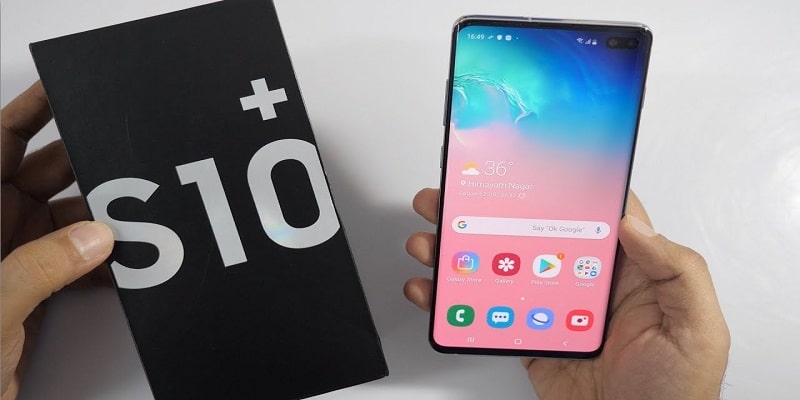Did your Galaxy S10 touchscreen suddenly begin to misbehave? Sometimes users get to fix this on their own while some are not so lucky. Know how it can be fixed by adhering to the steps below.
Page Contents:
How To Rectify Samsung Galaxy S10 Touchscreen Stopped Working
Finding a solution to a touchscreen issue is simple, except if the problem is a software one. If its software-related, a repair by a professional is your best bet. See the steps listed on how to rectify your S10 touchscreen problem.
1. Look Out For Physical Damage
If your Galaxy S10 touchscreen began to malfunction after the device fell from your hand and there are visible physical damages, the other fixing options below will not offer any assistance. If the screen is damaged after the drop, no software trick can restore it to the way it was. What you have to do is head to your local Samsung Service Center so the phone can be repaired. It is pretty hard to replace the screen, as some parts of it like the digitizer makes sure of that. The best fix you will most likely get is the complete replacement of the screen assembly. If you are fortunate and there are no visible damage in the motherboard, a decent screen replacement will solve your problem.
2. Clean Or Remove Screen Protector
If the smartphone did not fall from your hand and it is not damaged at all, then you can check if the screen protector is hindering the sensitivity of the digitizer. First, attempt to clean the screen with a neat, soft cloth. If that did not change anything, remove the screen protector totally. Hopefully, this will solve th problem.
3. Restart The Phone
If the first couple of fixes did not provide any solution, then the time is right to begin the standard software troubleshooting. Start with a soft reset. This is how you restart the phone by simulating the effects of a “battery pull.”
- Press and hole the Power + Volume Down buttons for about 10 seconds or till the phone power cycles. Hold on for the Boot Mode screen to appear.
- From the Maintenance Boot Mode screen, choose Normal Boot. The volume button is what you will use to navigate through the options shown to you. The lower left button can be used to select. Hold on for about 90 seconds for the reset to be wrapped up.
4. Ensure Device Software Is Up-To-Date
The next method is to engage in the installation of updates. What this means is ensuring all apps are updated. Normally, users should get a notification when a software can be updated but if you turned off this automated system, ensure you check for updates manually under Settings. For your applications, we advice that you also check for updates manually through the Google Play Store. Some Samsung applications will not be updated individually so make sure you visit each of their settings menu to check for updates. For instance, to update the Gallery app for Samsung Galaxy phones, head to app’s settings > About Gallery.
If you own apps you installed outside the Play Store or Samsung Galaxy store, see to it that they are compatible and updated too.
5. Reset All Settings
Resetting all settings can be the solution if every app and software have already been updated. When this is done, it will revert software settings to their defaults and enable default apps that may have been disabled unknowingly. It is useful to rectify minor bugs as well. To get it done:
- On the Home screen, swipe up on an empty spot to launch the Apps tray.
- Click General Management > Reset settings.
- Click Reset settings.
- If a PIN was already set up by you, enter it.
- Click Reset settings. When that is wrapped up, a confirmation window will be visible.

